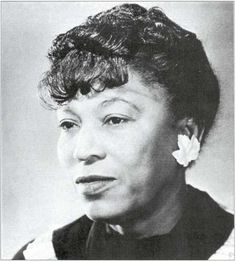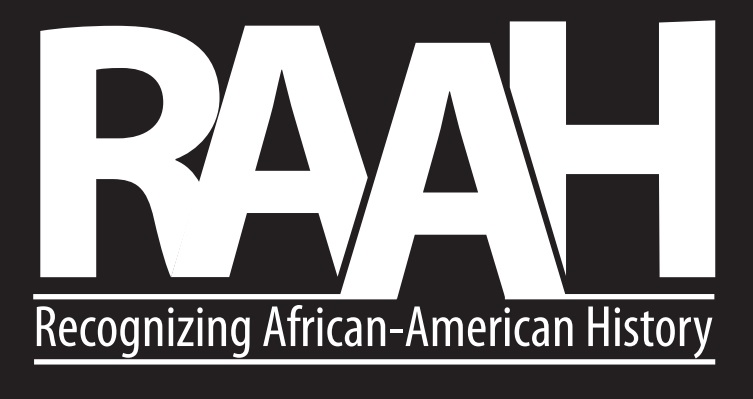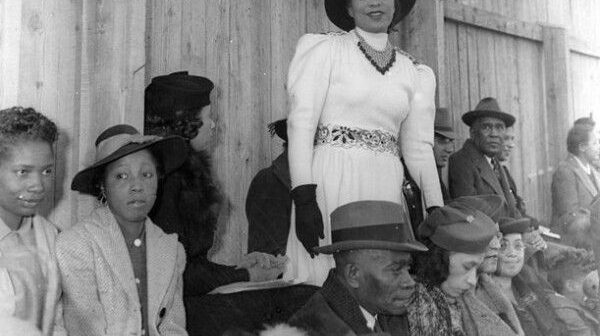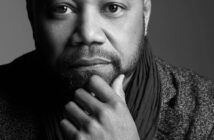
Zora Neale Hurston was an African-American novelist, short story writer, folklorist, and anthropologist known for her contributions to African-American literature, her portrayal of racial struggles in the American South, and works documenting her research on Haitian voodoo. Of Hurston’s four novels and more than 50 published short stories, plays, and essays, she is best known for her 1937 novel Their Eyes Were Watching God.
-Hurston was born in Notasulga, Alabama and moved to Eatonville with her family in 1894. Eatonville would become the setting for many of her stories and is now the site of the Zora! Festival, held each year in Hurston’s honor. In her early career, Hurston conducted anthropological and ethnographic research while attending Barnard College. While in New York she became a central figure of the Harlem Renaissance. Her short satires, drawing from the African-American experience and racial division, were published in anthologies such as The New Negro and Fire!!.
-After moving back to Florida, Hurston published her literary anthropology on African-American folklore in North Florida, Mules and Men (1935) and her first three novels: Jonah’s Gourd Vine (1934); Their Eyes Were Watching God (1937); and Moses, Man of the Mountain (1939). Also published during this time was Tell My Horse: Voodoo and Life in Haiti and Jamaica (1938), documenting her research on rituals in Jamaica and Haiti.
-Although her works touched on the African-American experience and her struggles as an African-American woman, Hurston’s novels went relatively unrecognized by the literary world for decades. Interest revived after author Alice Walker published “In Search of Zora Neale Hurston” in the March 1975 issue of Ms. Magazine. Her manuscript Every Tongue Got to Confess (2001), a collection of folktales gathered in the 1920s, was published posthumously after being discovered in the Smithsonian archives.
-Hurston was the fifth of eight children of John Hurston and Lucy Ann Hurston (née Potts). All of her four grandparents had been born into slavery. Her father was a Baptist preacher and sharecropper, who later became a carpenter, and her mother was a school teacher. She was born in Notasulga, Alabama, on January 7, 1891, where her father grew up and her grandfather was the preacher of a Baptist church.
-When she was three, her family moved to Eatonville, Florida; in 1887 it was one of the first all-black towns to be incorporated into the United States. Hurston said she always felt that Eatonville was “home” to her as she grew up there, and sometimes claimed it as her birthplace.Her father later was elected as mayor of the town in 1897 and in 1902 became preacher of its largest church, Macedonia Missionary Baptist.
-Hurston later used Eatonville as a backdrop in her stories. It was a place where African Americans could live as they desired, independent of white society. In 1901, some northern schoolteachers visited Eatonville and gave Hurston a number of books that opened her mind to literature; she described it as a kind of “birth”. Hurston spent the remainder of her childhood in Eatonville, and described the experience of growing up there in her 1928 essay, “How It Feels to Be Colored Me”.
-In 1904, Hurston’s mother died. Her father remarried to Mattie Moge; this was considered a minor scandal, as it was rumored that he had relations with Moge before his first wife’s death. Hurston’s father and stepmother sent her away to a Baptist boarding school in Jacksonville, Florida. They eventually stopped paying her tuition and the school expelled her. She later worked as a maid to the lead singer in a traveling Gilbert & Sullivan theatrical company.
-In 1917, Hurston began attending Morgan College, the high school division of Morgan State University, a historically black college in Baltimore, Maryland. At this time, apparently to qualify for a free high-school education (as well, perhaps to reflect her literary birth), the 26-year-old Hurston began claiming 1901 as her year of birth. She graduated from the high school of Morgan State University in 1918.
-In 1918, Hurston began her studies at Howard University, where she became one of the earliest initiates of Zeta Phi Beta sorority and co-founded The Hilltop, the university’s student newspaper. While there, she took courses in Spanish, English, Greek and public speaking and earned an associate degree in 1920.In 1921, she wrote a short story, John Redding Goes to Sea, which qualified her to become a member of Alaine Locke’s literary club, The Stylus. Hurston left Howard in 1924 and in 1925 was offered a scholarship by Barnard trustee Annie Nathan Meyer to Barnard College, Columbia University, where she was the college’s sole black student. Hurston received her B.A. in anthropology in 1928, when she was 37.
-While she was at Barnard, she conducted ethnographic research with noted anthropologist Franz Boas of Columbia University. She also worked with Ruth Benedict as well as fellow anthropology student Margaret Mead. After graduating from Barnard, Hurston spent two years as a graduate student in anthropology at Columbia University. Living in Harlem in the 1920s, Hurston befriended the likes of Langston Hughes and Countee Cullen, among several others. Her apartment, according to some accounts, was a popular spot for social gatherings. Around this time, Hurston experienced a few early literary successes, including placing in short-story and playwriting contests in Opportunity magazine.
-In 1927, Hurston married Herbert Sheen, a jazz musician and a former classmate at Howard who later became a physician. Their marriage ended in 1931. In 1939, while Hurston was working for the WPA, she married Albert Price. The marriage ended after seven months.
-She lived in a cottage in Eau Gallie, Florida, twice: once in 1929 and again in 1951. During the 1930s, Hurston was a resident of Westfield, New Jersey, where Langston Hughes was among her neighbors. In 1934 she established a school of dramatic arts “based on pure Negro expression” at Bethune-Cookman University (at the time, Bethune-Cookman College), a historically black college in Daytona Beach, Florida.
-In later life, in addition to continuing her literary career, Hurston served on the faculty of North Carolina College for Negroes (North Carolina Central University) in Durham, North Carolina.




